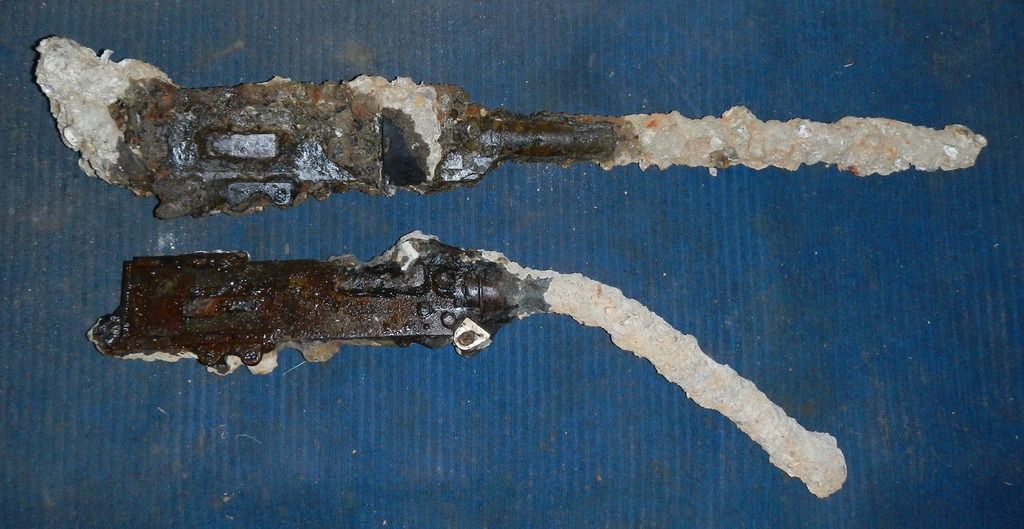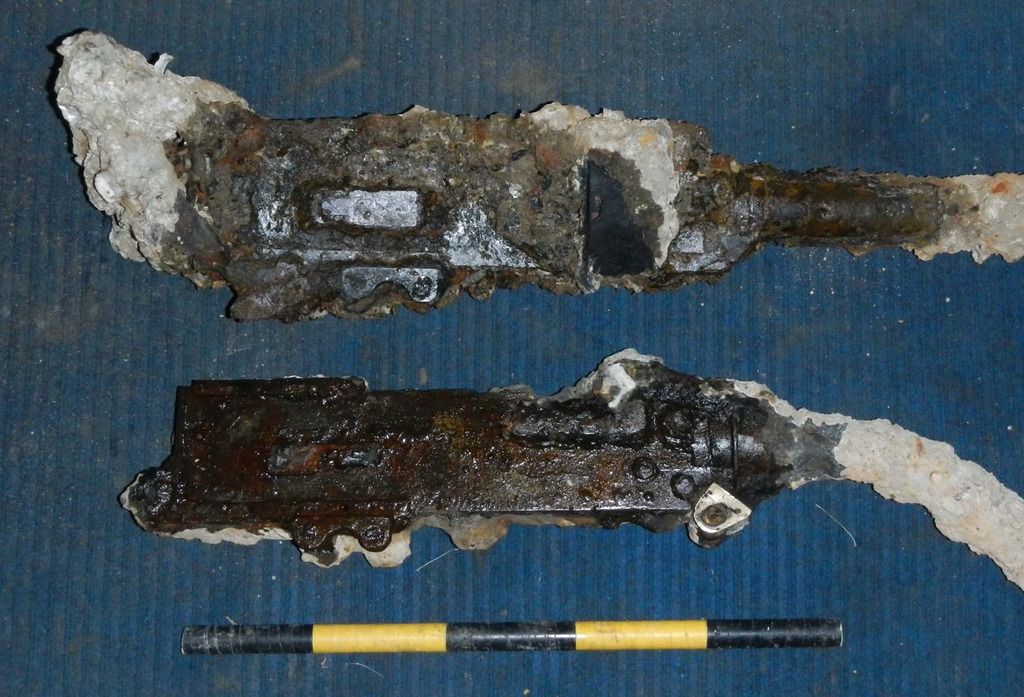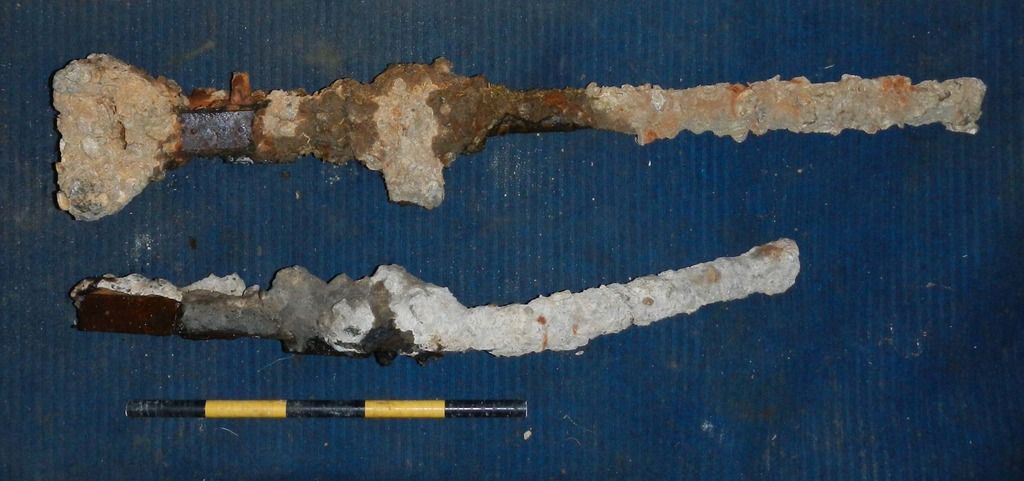Can anyone help with aircraft Browning30 cal machine gun ID?
Tue Jun 30, 2015 12:10 pm
Hiya,
I'm trying to identify two beautiful machine guns that were found as part of a dump of aircraft parts near a WWII RAAF base in Darwin Harbour. Both are Browning 303 MK II (I think!), but with different barrel shrouds, front mounting bracket, ammunition feed (?) and other features, and one has remnants of spade grips. I'm trying to get as much information as possible out of them, including whether they were actually aircraft versions and if it's possible to narrow down what aircraft type/s they may have come from. I've spent the last few hours researching but my knowledge and understanding of MGs is extraordinarily limited and I've become completely lost and out of my depth. If there's anyone who could give me any help with absolutely any information at all on these, or suggest some good research resources, I would seriously appreciate it.
I've attached some appalling photos (I'm sorry, they're the best I could take right now) and to make matters more difficult, both guns are covered in marine concretion and the metal is really fragile so I haven't been able to remove much of it without them falling apart - so the features of the guns themselves aren't particularly clear.
Thanks again,
Caroline.



I'm trying to identify two beautiful machine guns that were found as part of a dump of aircraft parts near a WWII RAAF base in Darwin Harbour. Both are Browning 303 MK II (I think!), but with different barrel shrouds, front mounting bracket, ammunition feed (?) and other features, and one has remnants of spade grips. I'm trying to get as much information as possible out of them, including whether they were actually aircraft versions and if it's possible to narrow down what aircraft type/s they may have come from. I've spent the last few hours researching but my knowledge and understanding of MGs is extraordinarily limited and I've become completely lost and out of my depth. If there's anyone who could give me any help with absolutely any information at all on these, or suggest some good research resources, I would seriously appreciate it.
I've attached some appalling photos (I'm sorry, they're the best I could take right now) and to make matters more difficult, both guns are covered in marine concretion and the metal is really fragile so I haven't been able to remove much of it without them falling apart - so the features of the guns themselves aren't particularly clear.
Thanks again,
Caroline.



Re: Can anyone help with aircraft Browning30 cal machine gun
Tue Jun 30, 2015 5:13 pm
Re: Can anyone help with aircraft Browning30 cal machine gun
Tue Jun 30, 2015 5:48 pm
Caroline wrote:
Just wild guess but the top one looks like a standard flexible Lewis gun but could also be a Japanese Type 92 7.7mm machine gun (

Re: Can anyone help with aircraft Browning30 cal machine gun
Tue Jun 30, 2015 8:02 pm
Definitely Browning small frame (.30 cal) machine guns. Unfortunately they were made and used by practically all of the belligerents of WWII, readily convertible from one role to another (the basic receiver - core - could be built as an aircraft wing gun, a flexible gun, a tripod mounted infantry gun, or fitted, rather awkwardly, with a stock and carried by an individual) and the details needed to properly identify them are either eroded, or still buried under concretions.
Details to look for - aside from stamps or other markings, are the size and pattern of holes in the cooling jackets (corroded and covered in sea-stuff) and the material of the spade grips - wood - micarta or bakelite. Those might be helpful external clues in determining US or Commonwealth
Details to look for - aside from stamps or other markings, are the size and pattern of holes in the cooling jackets (corroded and covered in sea-stuff) and the material of the spade grips - wood - micarta or bakelite. Those might be helpful external clues in determining US or Commonwealth
Re: Can anyone help with aircraft Browning30 cal machine gun
Wed Jul 01, 2015 3:58 pm
That is a British .303 aircraft gun as I have suggested. The receiver and barrel support was quite different from an infantry gun which was the M1919A4 (or A6).
The bottom one looks to have the back (buffer) plate missing.
The bottom one looks to have the back (buffer) plate missing.
Re: Can anyone help with aircraft Browning30 cal machine gun
Wed Jul 01, 2015 5:13 pm
bdk wrote:That is a British .303 aircraft gun as I have suggested. The receiver and barrel support was quite different from an infantry gun which was the M1919A4 (or A6).
The bottom one looks to have the back (buffer) plate missing.
I concur. Looking at the offset front trunnion vs the US models, and the rear mount, I have to agree it's a British .303 gun.
Re: Can anyone help with aircraft Browning30 cal machine gun
Thu Jul 02, 2015 9:44 am
Aha! That's it exactly. Thank you bdk
Re: Can anyone help with aircraft Browning30 cal machine gun
Thu Jul 02, 2015 9:51 am
Milmart Militaria wrote:Caroline wrote:
Just wild guess but the top one looks like a standard flexible Lewis gun but could also be a Japanese Type 92 7.7mm machine gun (
I actually thought the top one was a Lewis at first! After cleaning it a bit, it doesn't match though - sorry, the photos don't do them justice or show details very well. I would love it to be a Japanese gun! There's a lot of Japanese wrecks in the harbour here that are still yet to be found....! Unfortunately not this time though
Thanks Milmart Militaria
Re: Can anyone help with aircraft Browning30 cal machine gun
Thu Jul 02, 2015 10:23 am
shrike wrote:Definitely Browning small frame (.30 cal) machine guns. Unfortunately they were made and used by practically all of the belligerents of WWII, readily convertible from one role to another (the basic receiver - core - could be built as an aircraft wing gun, a flexible gun, a tripod mounted infantry gun, or fitted, rather awkwardly, with a stock and carried by an individual) and the details needed to properly identify them are either eroded, or still buried under concretions.
Details to look for - aside from stamps or other markings, are the size and pattern of holes in the cooling jackets (corroded and covered in sea-stuff) and the material of the spade grips - wood - micarta or bakelite. Those might be helpful external clues in determining US or Commonwealth
Hi Shrike, thank you very much for your reply. I'm going to try working on them a bit further once I can take some better photos of them as they are, so I'll give it a shot to see if I can expose some more of the jackets. I'm afraid of the spade grips (!) - the first bit fell off as soon as I touched it, but the actual handle portion might be in a bit better condition, so I'll see if I can get a bit exposed there too. If I have any success and get them looking decent, I'll post some more photos. Thanks again for your help
Re: Can anyone help with aircraft Browning30 cal machine gun
Fri Jul 03, 2015 9:31 pm
Hi Caroline just a word of warning in the eyes of the law they maybe still considered weapons would be an idea to seek an opinion from a gunsmith or maybe even donate them to the Darwin museum.
cheers dave
cheers dave
Re: Can anyone help with aircraft Browning30 cal machine gun
Thu Jul 16, 2015 9:02 pm
battle wrote:Hi Caroline just a word of warning in the eyes of the law they maybe still considered weapons would be an idea to seek an opinion from a gunsmith or maybe even donate them to the Darwin museum.
cheers dave
Hi Dave,
That's a very good point. At the moment I'm effectively working as a sub-consultant to the Department of Defence and they've given the ok for us to examine these. I think there hasn't been much concern as these have been in the water for around 60 years but you're certainly right and I'll definitely be chasing it up once we've finished recording re. where they go. I'm trying to get a conservator involved so they can go to a museum; would be great if they could.
Thanks for raising this.
Cheers,
Caroline
